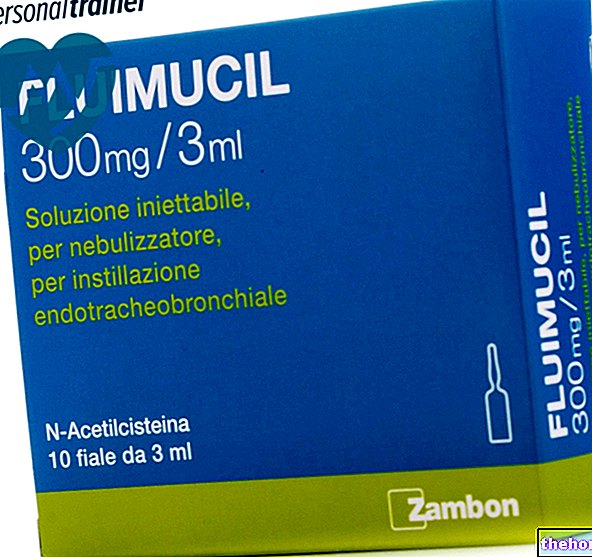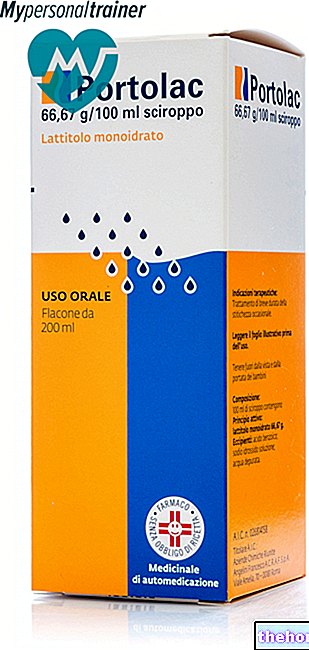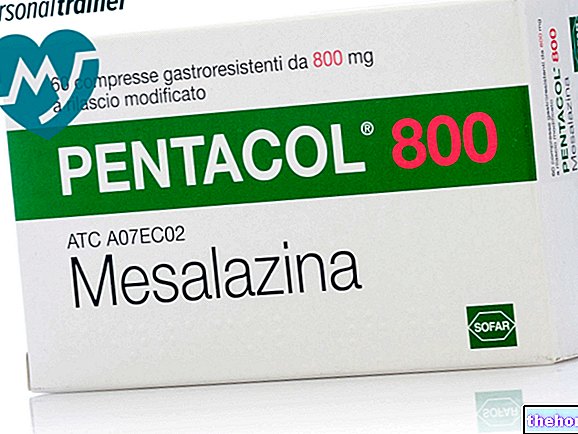Active ingredients: Mupirocin (Mupirocin calcium salt)
Bactroban 2% cream
Bactroban package inserts are available for pack sizes:- Bactroban 2% cream
- BACTROBAN 2% Ointment
Why is Bactroban used? What is it for?
Bactroban 2% cream (called Bactroban in this leaflet) contains a medicine called mupirocin calcium salt.
Bactroban is an antibiotic cream.
It is used for:
- treat skin infections of small lacerations, sutured wounds or abrasions
- kill bacteria that cause skin infections called Staphylococcus aureus and Streptococcus pyogenes
Contraindications When Bactroban should not be used
Do not use Bactroban:
- if you are allergic (hypersensitive) to mupirocin calcium salt, mupirocin or any of the other ingredients of this medicine (listed in section 6).
- if the patient is less than 1 year of age.
If you are not sure if this applies to you, do not use this medicine. Talk to your doctor, nurse or pharmacist before using Bactroban.
Precautions for use What you need to know before taking Bactroban
Bactroban can cause severe skin reactions or allergies. See "Conditions to be aware of" in section 4.
If Bactroban is used for long periods, candidiasis (a "fungal infection) can develop.
On the skin this looks like bright red spots which can be very itchy. Sometimes small pustules may appear in the center. If this happens, tell your doctor, pharmacist or nurse.
Keep the cream away from the eyes.
If you accidentally get the cream in your eyes, wash them thoroughly with water.
A different preparation of mupirocin is available which is used to prevent or treat infections inside the nose.
Interactions Which drugs or foods may change the effect of Bactroban
Tell your doctor or pharmacist if you are taking, have recently taken or might take any other medicines.
Warnings It is important to know that:
Pregnancy and breastfeeding
If you are pregnant or breast-feeding, think you may be pregnant or are planning to have a baby, ask your doctor or pharmacist for advice before using this medicine. If an injured nipple is to be treated, the cream should be thoroughly washed off before breastfeeding.
Bactroban contains cetyl alcohol and stearyl alcohol.
These excipients can cause skin reactions at the site of application of the cream. See also section 4.
Dose, Method and Time of Administration How to use Bactroban: Posology
Always use this medicine exactly as your doctor has told you. If in doubt, consult your doctor or pharmacist.
Use of the medicine
Do not mix Bactroban with other medicinal creams or ointments for external use on the infected area of the skin as this may reduce the effectiveness of Bactroban.
Bactroban is usually applied to the skin up to three times a day.
- Wash and dry your hands.
- Place a small amount of Bactroban on a clean cotton wool or gauze pad.
- Apply the cream on the infected area of the skin.
- The treated area can be covered with a plaster or other suitable bandage unless your doctor tells you to leave it uncovered.
- Put the cap on the tube and wash your hands.
How long to use Bactroban?
Use Bactroban for as long as your doctor tells you. If you are unsure, consult your doctor, nurse or pharmacist. Bacteria are usually cleared from the skin within 10 days of starting treatment. The duration of treatment should not exceed 10 days. Throw away any leftover cream. If the condition of your skin does not improve within 3-5 days, please contact your doctor.
Overdose What to do if you have taken too much Bactroban
If you swallow Bactroban or use more of it than you should
- If you use more Bactroban than you should, talk to your doctor, nurse or pharmacist.
- If you swallow any cream, contact your doctor immediately and indicate what and how much you have ingested.
If you forget to use Bactroban
- If you forget to apply Bactroban, apply it immediately as soon as you remember.
- If your next dose is within 1 hour, skip the missed dose.
- Do not use a double dose to make up for a forgotten dose.
If you stop taking Bactroban
If you stop using Bactroban too soon, not all bacteria may have been eliminated or they may continue to grow. Talk to your doctor, nurse or pharmacist when you stop using the cream.
If you have any further questions on the use of this product, ask your doctor, nurse or pharmacist.
Side Effects What are the side effects of Bactroban
Like all medicines, this medicine can cause side effects, although not everybody gets them.
Conditions to pay attention to
Severe skin reactions or allergies
Very rare in people using Bactroban. The signs include:
- itchy rash
- swelling, sometimes of the face or mouth, causing difficulty in breathing
Contact a doctor immediately if any of these symptoms occur. Stop using Bactroban.
if you develop a severe skin reaction or an "allergy:
- wash off the cream
- stop using it
- tell your doctor as soon as possible.
On rare occasions, drugs such as Bactroban can cause inflammation of the colon (large intestine), causing diarrhea, usually with blood and mucus, stomach pain, fever (pseudomembranous colitis).
Tell your doctor as soon as possible if you get any of these symptoms. The following side effects may occur with this medicine:
Common (these may affect up to 1 in 100 people)
- itching, redness, burning, erythema, swelling, pain in the area of the skin where Bactroban is applied.
Dryness and redness of the skin can also occur in other parts of the body.
Reporting of side effects
If you get any side effects, talk to your doctor or pharmacist. This includes any possible side effects not listed in this leaflet. Undesirable effects can also be reported directly through the national reporting system at "https://www.aifa.gov.it/content/segnalazioni-reazioni-avverse".
By reporting side effects you can help provide more information on the safety of this medicine.
Expiry and Retention
- Keep Bactroban out of the sight and reach of children.
- Do not store above 25 ° C. Do not freeze.
- Do not use Bactroban after the expiry date which is stated on the tube. The expiry date refers to the last day of the month.
- Do not use Bactroban if it looks different than normal.
- Do not throw any medicines via wastewater or household waste. Ask your pharmacist how to throw away medicines you no longer use. This will help protect the environment.
Composition and pharmaceutical form
What Bactroban contains
- Each gram of cream contains 21.5 mg of mupirocin calcium salt, equivalent to 20 mg of mupirocin.
- The other ingredients are xanthan gum, liquid paraffin, cetomacrogol 1000, stearyl alcohol, cetyl alcohol, phenoxyethanol, benzyl alcohol, purified water. See also section 2.
What Bactroban looks like and contents of the pack
- Bactroban is a homogeneous white cream.
- Bactroban is available in a 15g tube. Each tube is contained in a box.
Source Package Leaflet: AIFA (Italian Medicines Agency). Content published in January 2016. The information present may not be up-to-date.
To have access to the most up-to-date version, it is advisable to access the AIFA (Italian Medicines Agency) website. Disclaimer and useful information.
01.0 NAME OF THE MEDICINAL PRODUCT
BACTROBAN 2% CREAM
02.0 QUALITATIVE AND QUANTITATIVE COMPOSITION
Each gram of cream contains: mupirocin calcium salt 21.5 mg corresponding to mupirocin 20 mg.
For the full list of excipients, see section 6.1.
03.0 PHARMACEUTICAL FORM
Cream.
Bactroban cream looks like a homogeneous white cream.
04.0 CLINICAL INFORMATION
04.1 Therapeutic indications
BACTROBAN Cream is indicated for the topical treatment of skin infections secondary to traumatic lesions such as, for example, small lacerations, sutured wounds or abrasions (up to 10 cm in length or 100 cm2 of surface), caused by sensitive strains of Staphylococcus aureus And Streptococcus pyogenes.
04.2 Posology and method of administration
Dosage
Adults, children aged> 1 year, elderly:
3 times a day, up to 10 days, depending on the response.
Patients who do not show a clinical response within 3-5 days should be re-evaluated.
The duration of treatment should not exceed 10 days.
Children under one year of age:
Bactroban cream has not been studied in children less than 1 year of age and therefore should not be used in such patients until further data are available.
Patients with hepatic insufficiency:
No dosage adjustment is required.
Patients with renal insufficiency:
No dosage adjustment is required.
Method of administration
Apply a thin layer of cream to the affected area using clean cotton wool or a gauze pad.
The treated area can be covered with a bandage.
Do not mix with other preparations as there is a risk of dilution which may result in a reduction in the antibacterial activity and a potential loss of stability of the mupirocin in the cream.
04.3 Contraindications
Hypersensitivity to mupirocin or to any of the excipients (see section 6.1).
04.4 Special warnings and appropriate precautions for use
If any serious sensitization or local irritation reaction occurs, following the use of Bactroban cream, the treatment must be stopped, the product removed with water and appropriate therapy instituted.
As with other antibacterial products, prolonged use can result in overgrowth of non-sensitive organisms.
Pseudomembranous colitis has been reported with the use of antibiotics and can range in severity from mild to life-threatening conditions. Therefore, it is important to consider its diagnosis in patients who present with diarrhea during or after antibiotic use. Although this is less likely to occur with topical mupirocin, if the diarrhea is prolonged or significant, or if the patient experiences abdominal cramps, the treatment should be stopped immediately and the patient should be subjected to further checks.
The formulation of Bactroban cream is not suitable for intranasal use. A separate pharmaceutical form, BACTROBAN Nasal ointment, is available for intranasal use.
Avoid contact with eyes. In case of contamination, the eyes must be washed abundantly with water, until the cream residues are eliminated.
Bactroban cream contains cetyl alcohol and stearyl alcohol. These inactive ingredients can cause local skin reactions (eg contact dermatitis).
04.5 Interactions with other medicinal products and other forms of interaction
No interactions with other drugs have been identified.
04.6 Pregnancy and lactation
Fertility
There are no data on the effects of mupirocin on human fertility. Studies in rats did not show effects on fertility (see section 5.3).
Pregnancy
Reproduction studies conducted with mupirocin in animals have shown no evidence of harm to the fetus (see section 5.3). As there is no clinical experience with its use in pregnancy, lamupirocin should be used during this period only in cases where the potential benefits outweigh the possible risks of treatment.
Feeding time
There is no information on the passage of mupirocin into breast milk.
If you have to treat an injured nipple, wash it thoroughly before breastfeeding.
04.7 Effects on ability to drive and use machines
No effects on the ability to drive or operate machinery were observed.
04.8 Undesirable effects
Data from clinical trials were used to determine the very common to rare frequency of adverse events.
Very rare side effects were mainly determined from post-marketing data and therefore relate mainly to information about rates rather than true frequency.
The following convention has been used for the classification of adverse events in terms of frequency: very common> 1/10, common> 1/100 and 1/1000 and 1 / 10,000 and
Immune system disorders:
Very rare: Systemic allergic reactions such as generalized rash, urticaria, angioedema .
Skin and subcutaneous tissue changes:
Common: Skin hypersensitivity reactions at the application site including urticaria, pruritus, erythema, burning sensation, contact dermatitis, rash.
Dry skin and erythema have been reported in studies conducted in healthy volunteers to evaluate local irritability.
Reporting of suspected adverse reactions
Reporting of suspected adverse reactions occurring after authorization of the medicinal product is important as it allows continuous monitoring of the benefit / risk balance of the medicinal product. Healthcare professionals are asked to report any suspected adverse reactions via the national reporting system. "Street address www.aifa.gov.it/responsabili.
04.9 Overdose
The toxicity of mupirocin is very low. In case of accidental ingestion of the cream, administer symptomatic treatment.
05.0 PHARMACOLOGICAL PROPERTIES
05.1 Pharmacodynamic properties
Pharmacotherapeutic group: dermatologicals.
ATC code: D06AX09. Antibiotics and chemotherapy for dermatological use.
Mechanism of action
Mupirocin is a new antibiotic produced by fermentation from Pseudomonas fluorescens.
Mupirocin inhibits isoleucyl-tRNA synthetase, thereby stopping bacterial protein synthesis.
Mupirocin has bacteriostatic properties at the lowest inhibitory concentrations and bactericidal properties at the highest concentrations reached after topical application.
Resistance mechanism
A low level of resistance in staphylococci is believed to be the result of point mutations within the usual staphylococcal chromosomal gene (ileS) for the target enzyme isoleucyl-tRNA synthetase. A high level of resistance in staphylococci has been shown to be due to a distinct plasmid encoding isoleucyl-RNA synthetase enzyme.
Inherent resistance in Gram negative organisms such as Enterobacteriaceae it may be due to poor penetration of the outer membrane of the gram-negative bacterial cell wall.
Due to this particular mechanism of action and the uniqueness of its chemical structure, mupirocin does not show any cross-resistance with other clinically available antibiotics.
Microbiological susceptibility
The prevalence of acquired resistance may vary geographically and with time for selected species therefore, particularly for the treatment of severe infections, local information on resistance is desirable. If necessary, seek expert advice when the local prevalence of resistance is such that the utility of the agent in at least some types of infections is questionable.
* Activity has been satisfactorily demonstrated in clinical trials
05.2 Pharmacokinetic properties
Absorption
In humans, systemic absorption of mupirocin through intact skin is low, although it can occur through broken / affected skin. However, clinical studies have shown that, when administered systemically, mupirocin is converted to its microbiologically inactive monic acid metabolite and rapidly eliminated.
Excretion
Mupirocin is rapidly cleared from the body by metabolism to inactive monic acid, which is rapidly excreted by the kidney.
05.3 Preclinical safety data
Preclinical effects occurred only at exposure levels so unlikely that they were not cause for concern at the doses normally used in humans. Mutagenicity studies revealed no risk to humans.
06.0 PHARMACEUTICAL INFORMATION
06.1 Excipients
Xanthan gum, liquid paraffin, cetomacrogol 1000, stearyl alcohol, cetyl alcohol, phenoxyethanol, benzyl alcohol, purified water.
06.2 Incompatibility
None known.
06.3 Period of validity
18 months.
06.4 Special precautions for storage
Do not store above 25 ° C. Do not freeze.
06.5 Nature of the immediate packaging and contents of the package
Aluminum tube, with screw cap, containing 15 g of white cream.
06.6 Instructions for use and handling
Discard the product left at the end of the treatment.
Wash hands after application.
07.0 MARKETING AUTHORIZATION HOLDER
GlaxoSmithKline S.p.A.
Via Alessandro Fleming, 2 - Verona
08.0 MARKETING AUTHORIZATION NUMBER
1 tube of 15 g of 2% A.I.C. cream n. 028978031
09.0 DATE OF FIRST AUTHORIZATION OR RENEWAL OF THE AUTHORIZATION
21 December 1999 / June 2011
10.0 DATE OF REVISION OF THE TEXT
2 December 2014




























